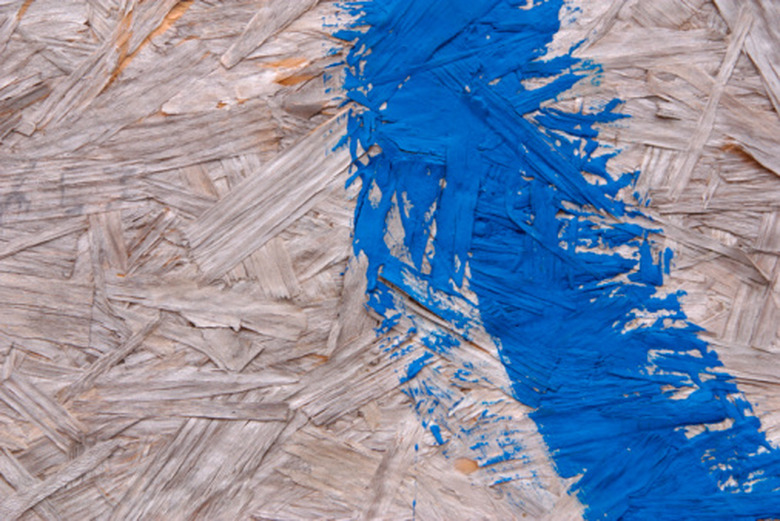Types Of Glue Used In OSB
Oriented strand boards, or OSBs, are building panels made with recycled wood chips glued together. OSB panels are inexpensive and readily available and, thus, commonly used in homes and buildings. Four types exist, from OSB / 1 to OSB / 4. While OSB makes efficient use of wood chips, which would be otherwise be thrown away, concerns arise with the glues used. The glues have been reported to emanate formaldehyde gas, which is a known health hazard. Before you use OSB in your next building project, get all the facts first on the characteristics of OSB.
OSB / 1
OSB / 1
OSB / 1 is a general purpose building panel designed for dry areas, such as building interiors. It is a non-structural panel, meaning it can bear no weight. It is designed for building non-stress items such as furniture or shipping crates.The type of glue used is Urea Formaldehyde, or UF glue. According to the TECO wood testing organization, UF glue is reported to release formaldehyde gas, particularly if it gets wet. The dampness starts to dissolve UF, which starts the emission process.
OSB / 2
OSB / 2
OSB / 2 is a structural panel, meaning it can bear weight. It can be used for flooring, building panels and crating. Like OSB / 1, it is also deigned for dry conditions only. Two types of glue are used: Isocyanate or PMDI glue for the inner core, and Melamine-Urea-Formaldehyde (MUF) or Phenol Formaldehyde (PF) for the outer layers. The TECO organization points out that these glues are more water-stable than UF, which makes them more waterproof. This however, doe not mean OSB / 2 is 100 percent waterproof. OSB / 2 panels still absorb water because of the glues used in the inner cores and release formaldehyde when damp.
OSB / 3
OSB / 3
OSB / 3 is similar to OSB / 2, making it suitable for load bearing applications. Unlike OSB / 2, however, it can be used in damp or humid conditions. This is because the glue used is Phenol Formaldehyde (PF) glue throughout the panel, including the core. Its often used for outside sheathing, roof sheathing, or other outdoor environments. PF glue is considered waterproof, so the release of gas is greatly diminished.
OSB / 4
OSB / 4
OSB / 4 is a "heavy duty" version of OSB / 3. It is used to make structural panels, outside sheathing, and composite load-bearing beams and floor trusses. The glue is also Phenol Formaldehyde (PF) glue. Having similar characteristics as OSB / 3, the panels are also considered damp proof. Bear in mind the glue may be waterproof, but the wood itself is not. All OSB panels, no matter what grade, absorb water and eventually swell if directly exposed to water for long periods.
Cite This Article
MLA
Oldhand, Tony. "Types Of Glue Used In OSB" sciencing.com, https://www.sciencing.com/types-glue-used-osb-8615640/. 24 April 2017.
APA
Oldhand, Tony. (2017, April 24). Types Of Glue Used In OSB. sciencing.com. Retrieved from https://www.sciencing.com/types-glue-used-osb-8615640/
Chicago
Oldhand, Tony. Types Of Glue Used In OSB last modified March 24, 2022. https://www.sciencing.com/types-glue-used-osb-8615640/
